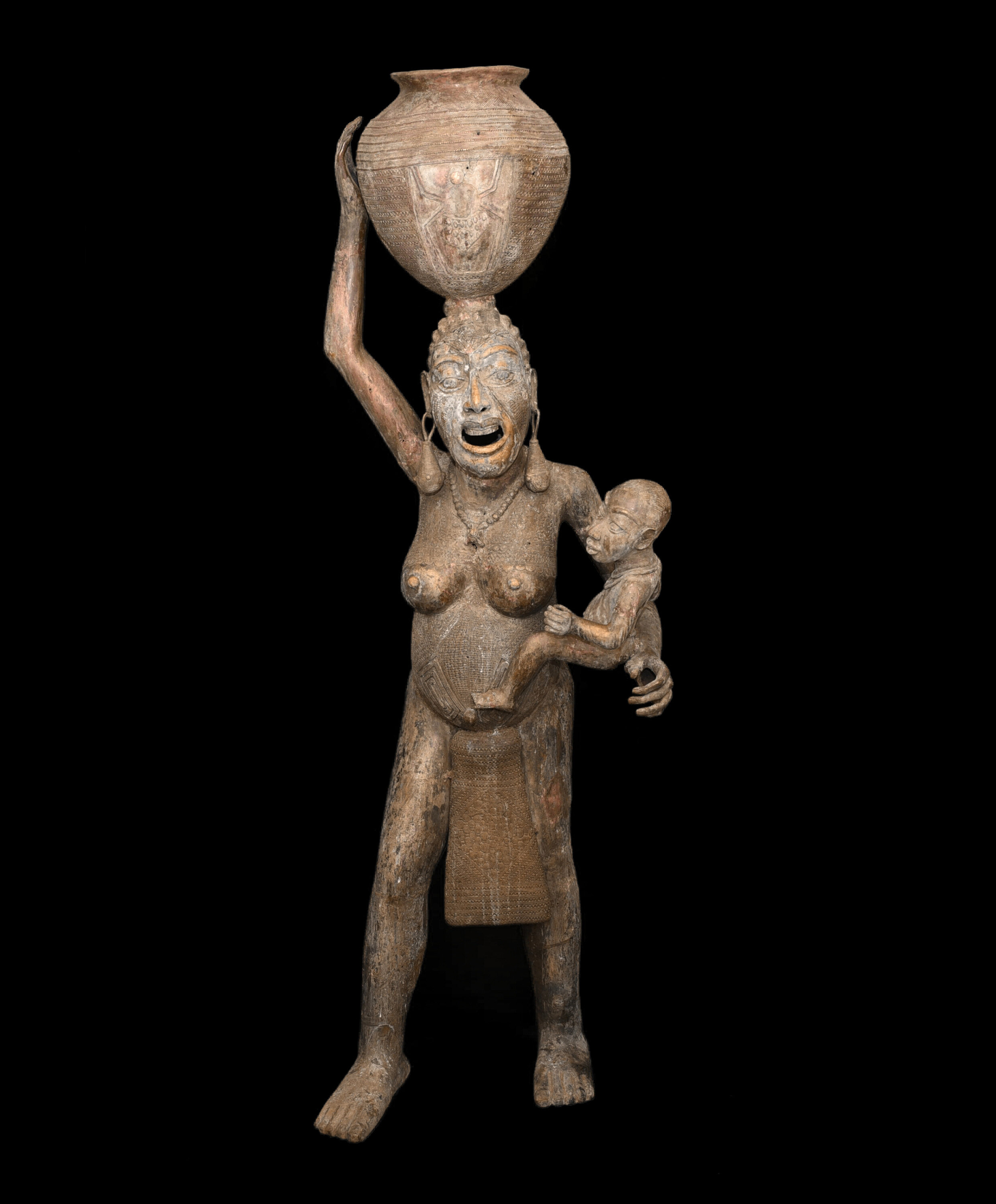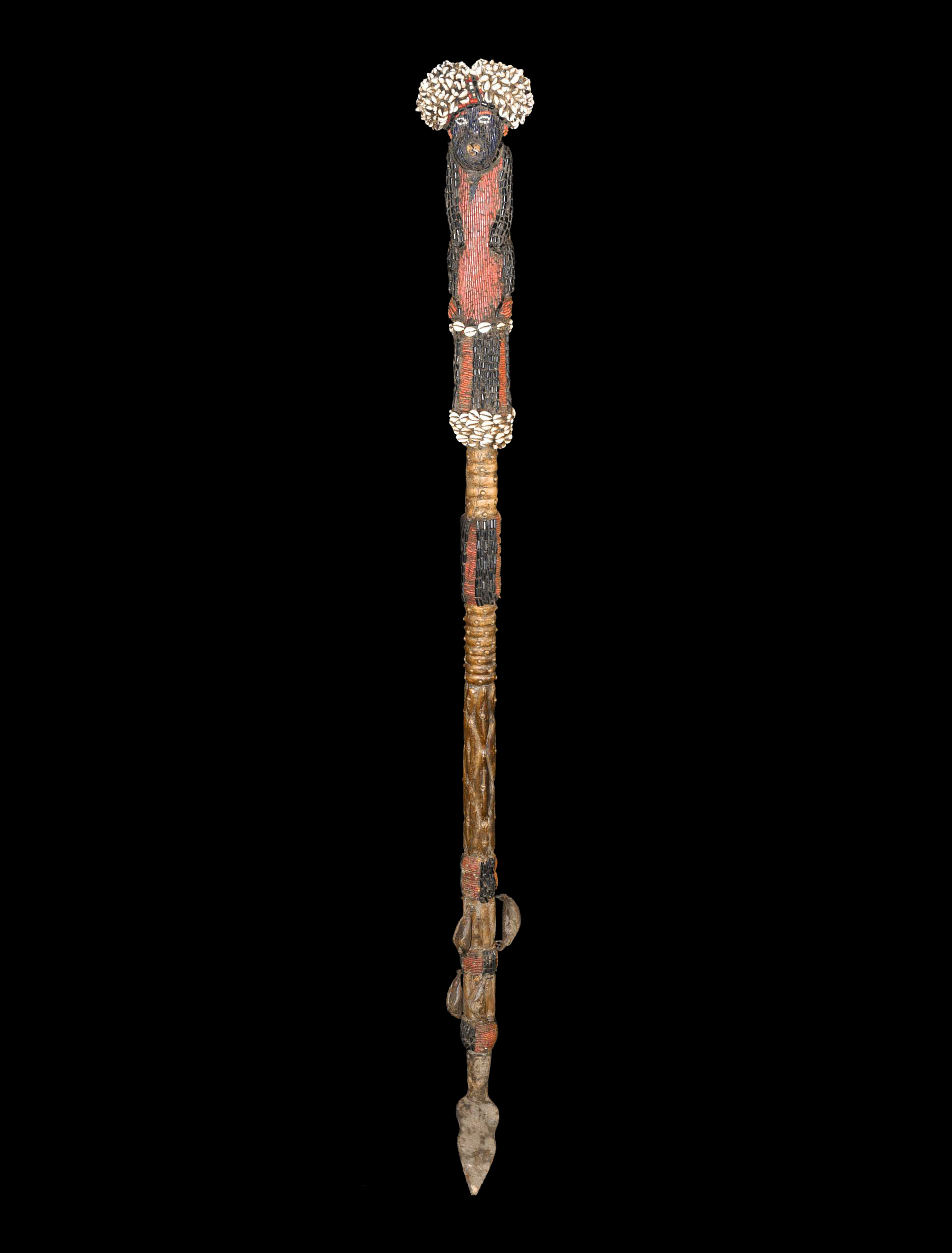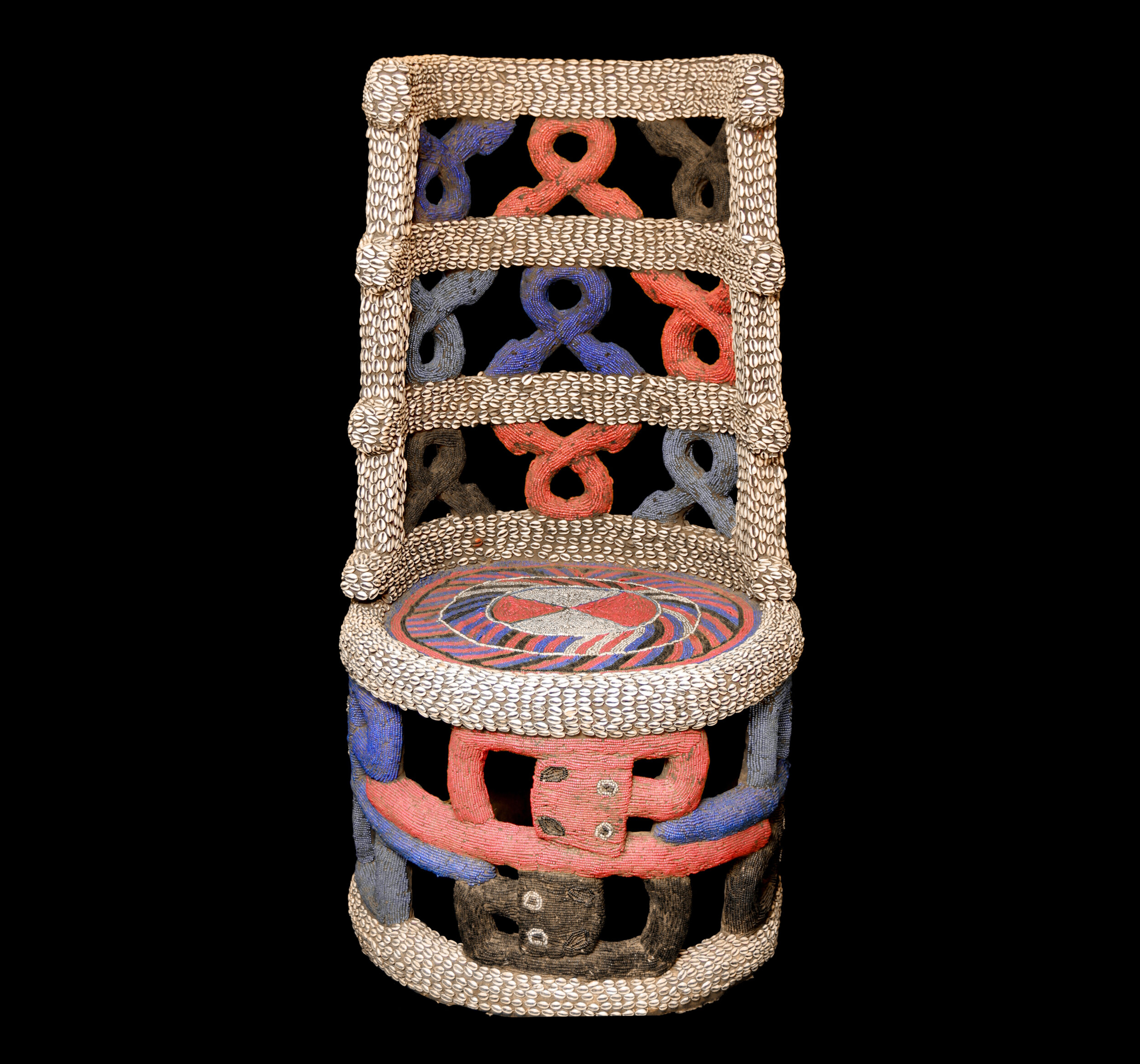MADOU-YENOU BEADED AND WOODEN THRONES
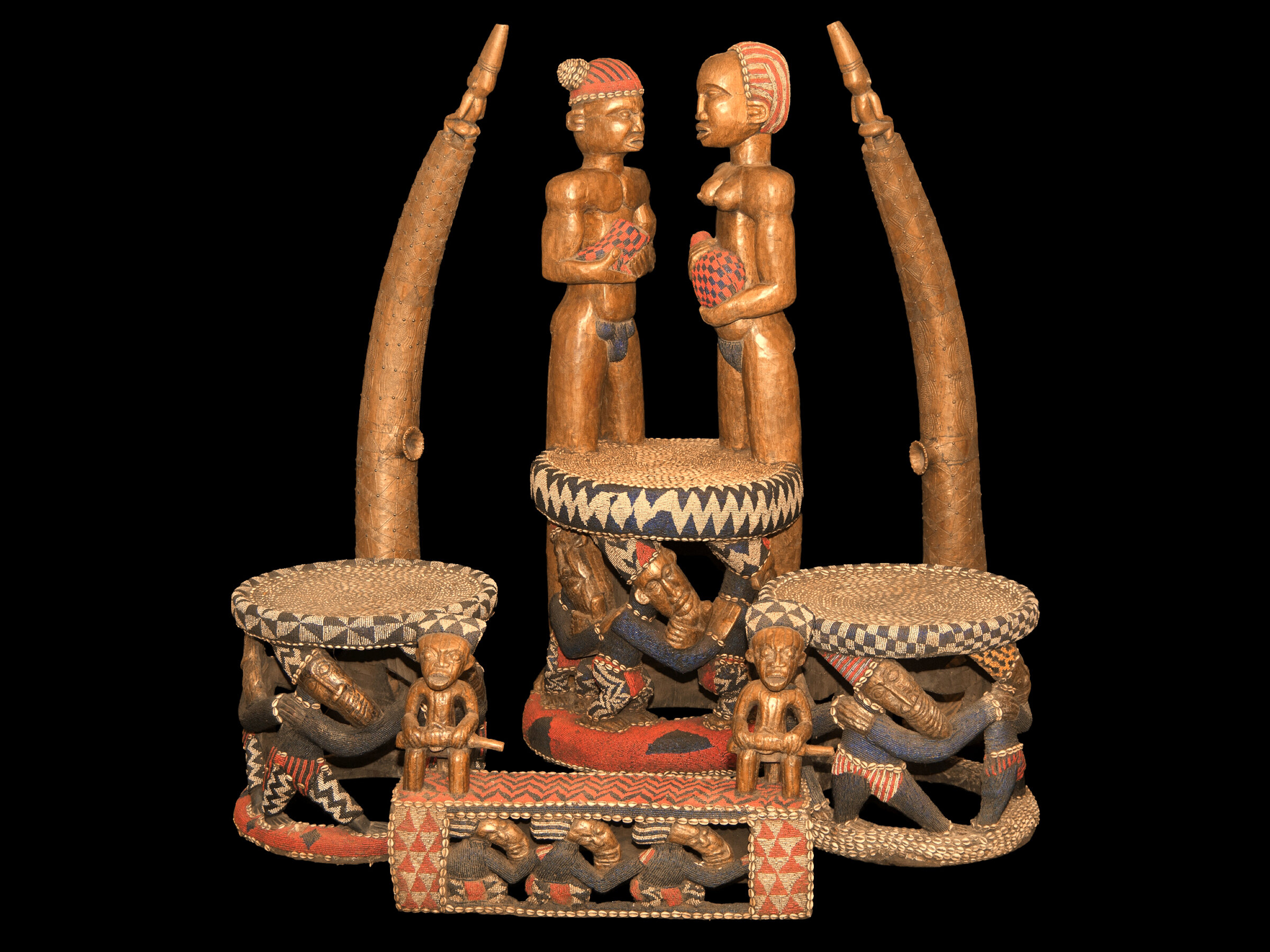


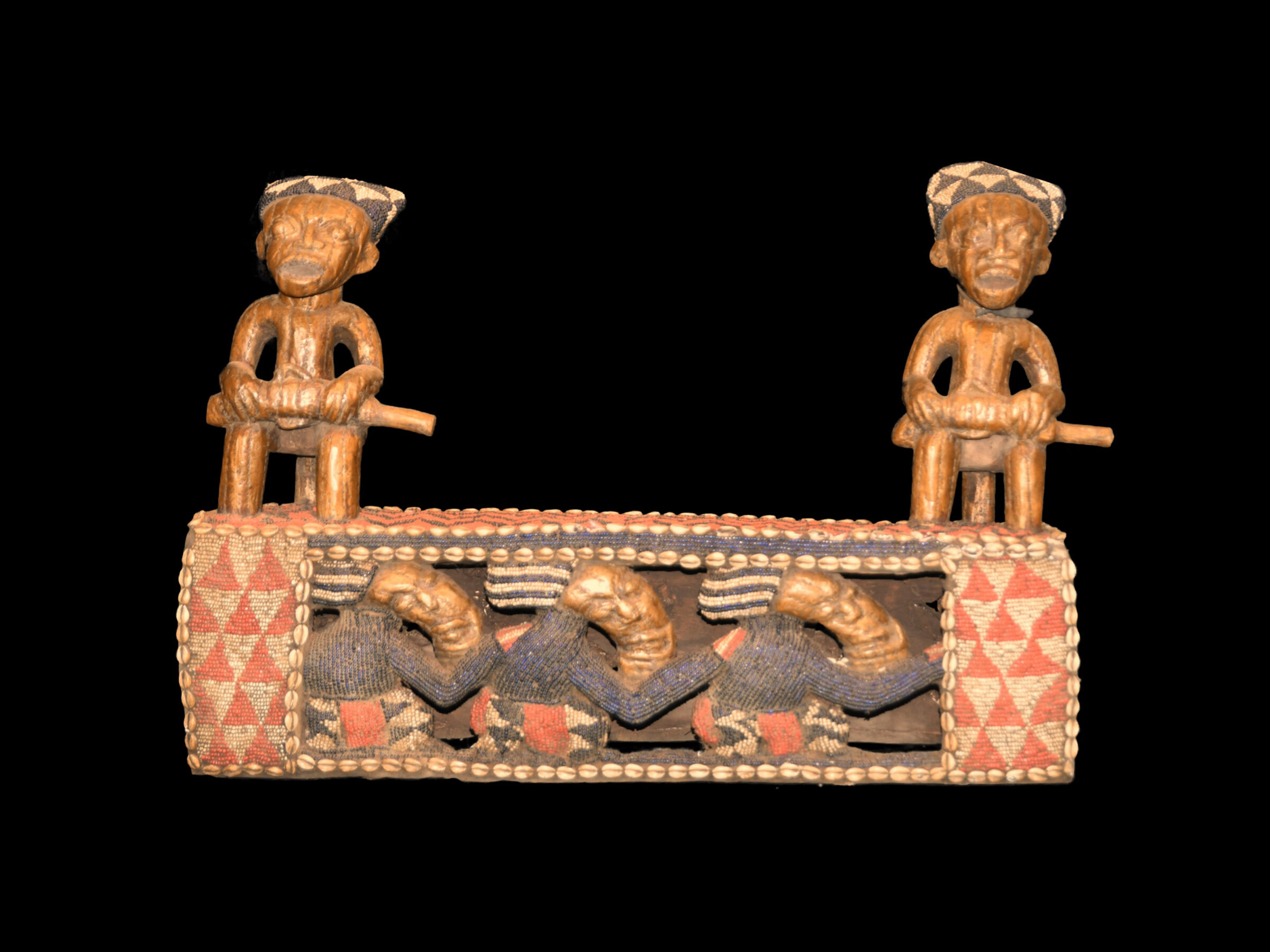
Royal Throne
Wood, beads, bronze cladding, cowrie shells. H: 76 in/194 cm
Provenance: Njikam Isidore–sculptor; Ex Bakime Royal Palace Tikar

